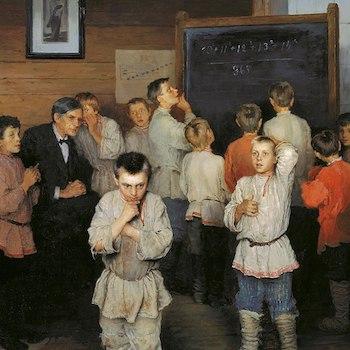As we debate the pros and cons of reopening public schools in the midst of the COVID-19 pandemic, there are multiple factors that must be considered prior to making a decision.
There are three different population groups whose safety we must worry about: School kids, faculty and staff, and children's families back home. They each face a different set of risks, some of which are in direct conflict with each other. Let's consider the students, first.
The threat that the coronavirus poses to children and young adults is not zero, but it's extremely small. The latest data from the CDC (representing February 1 to July 8) indicate the following number of COVID-19 deaths by age group for people who are of school age and younger:

To put those numbers into perspective, we must remember that people -- sadly, including schoolchildren and young adults -- die all the time. The CDC also provides the leading causes of death for each age group, which are depicted below. (These data are from 2018. Note that the 5-14 age group has been split into 5-9 and 10-14. The coloring is not relevant for our purposes.)

Even if we roughly extrapolate the COVID-19 deaths reported so far for an entire year (for example, by doubling them), we find that coronavirus deaths are still extremely uncommon. Let's assume, for instance, that 300 people aged 15-24 will die of COVID-19 this year. That would make COVID-19 the #7 cause of death for that age group, but it's still very far behind the top three causes of death: Accidents (12,044), suicide (6,211), and homicide (4,607).
We can examine accidental deaths even further. The CDC reveals the following breakdown for the 15-24 age group:

Once again, this reveals just how rare COVID-19 deaths are among this age demographic. More 15-24-year-olds drown than die from coronavirus.
From the students' perspective, the benefits of a school closure are minimal. The negative consequences, however, are considerable. Young children need to play with others, and older children need to learn. They all need to socialize. Preventing this will delay their development and education. For these reasons, The Economist endorses opening schools first as lockdowns ease because "[t]he costs of keeping them closed are too high."
The calculation changes when we consider the risks to teachers, staff, and students' families, who obviously are in older age demographics. The following depicts the number of COVID-19 deaths (from February 1 to July 8) by age group for all ages:

Once again, we can put these numbers into context by examining the top causes of death for each age group. (As above, the data are from 2018. For ease of visualization, the younger age groups were removed in this chart but are shown separately above.)

This time, if we roughly extrapolate the COVID-19 deaths reported so far for an entire year (by doubling them, as we did above), we find that coronavirus deaths are causing a substantial death toll. For instance, if we assume 11,000 deaths for the 45-54 age group, COVID-19 becomes the #4 cause of death. Likewise, assuming 48,000 deaths for the 65-74 age group, COVID-19 becomes the #3 cause of death.
Across all age groups, a death toll upwards of 200,000 people would make coronavirus the overall #3 cause of death in America in 2020. This is consistent with analysis we did previously.
Combining all of the above into a more understandable picture of the contribution that COVID-19 makes toward mortality in each age group, we can examine the percentage of deaths in each age group that are due to coronavirus. (We did this analysis previously, but these numbers are updated to include deaths from February 1 to July 8.)

What Do the Data Suggest About Reopening Schools?
There are many additional ways to analyze the data (e.g., case-fatality rates, infection-fatality rates, mortality rates). To answer the question, "What is the chance I will die if I get coronavirus?" we need to have good estimates for the infection-fatality rate by age. A study based in Geneva, Switzerland came up with the following numbers:

The CDC's latest estimate of 0.65% is in close agreement with the the overall IFR reported by the Swiss study.
Regardless of how one looks at the data, they all point in the same direction: COVID-19 poses a very minor threat to students. The threat of reopening schools, therefore, is the health of teachers, faculty, and childrens' families. Measures should be aimed at protecting those populations.




